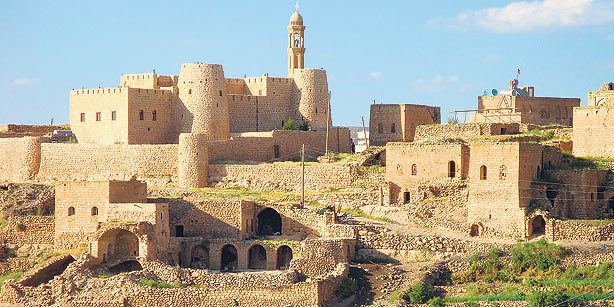 | ||
The assyrian syriac people in tur abdin upper mesopotamia beth nahrin
Tur Abdin (Syriac: ܛܘܼܪ ܥܒ݂ܕܝܼܢ) is a hilly region situated in southeast Turkey, including the eastern half of the Mardin Province, and Şırnak Province west of the Tigris, on the border with Syria. The name 'Tur Abdin' is derived from Syriac, meaning "mountain of the servants (of God)". Tur Abdin is of great importance to Syriac Orthodox Christians, for whom the region used to be a monastic and cultural heartland. The Assyrian community of Tur Abdin call themselves Suroye and Suryoye, terms which derive etymologically from the earlier Assurayu (see Etymology of Syria) and traditionally speak a central Neo-Aramaic dialect called Turoyo.
Contents
- The assyrian syriac people in tur abdin upper mesopotamia beth nahrin
- Doku of tur abdin legacy of silence english subti 2015
- SettlementsEdit
- AntiquityEdit
- ModernEdit
- Recent conflictsEdit
- MonasteriesEdit
- Notable peopleEdit
- References
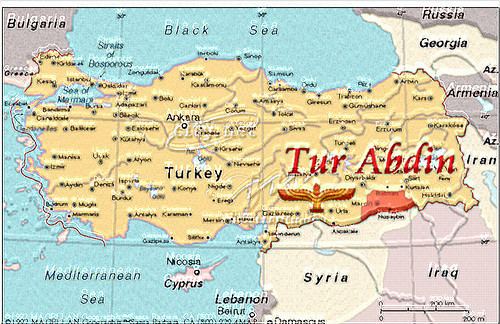
Doku of tur abdin legacy of silence english subti 2015
SettlementsEdit
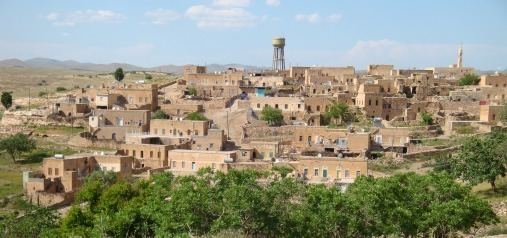
The town of Midyat and the villages of Hah, Bequsyone, Dayro da-Slibo, Salah (with the old monastery of Mor Yaqub), Iwardo (with Mor Huschabo), Anhel, Kafro, Arkah (Harabale, with Dayro Mor Malke), Beth Sbirino, Miden (Middo), Kerburan, Binkelbe with Mor Samun Zayte and Beth Zabday (Azech) were all important Syriac Orthodox places among with countless other villages. Hah has the ancient `Idto d'Yoldath-Aloho, the Church of the Mother of God.
AntiquityEdit
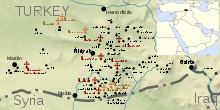
In the 9th century BCE the Assyrian King Ashurnasirpal II described crossing the plateau of Tur Abdin (which he calls "Kashyari") on his way to attack the region of Nairi. Assyrian source from the 9th century BC; where it is called "Kashyari". In 586 B.C. the prophet Ezekiel mentions the famed wine of Izlo, on the southern edge of the plateau of Tur Abdin, in his prophecy against Tyre. The Mor Gabriel Monastery, the oldest Syriac (Syrian Orthodox) church in the world, was founded in 397 by the ascetic Mor Shmu'el (Samuel) and his student Mor Shem'un (Simon). According to tradition, Shem'un had a dream in which an Angel commanded him to build a House of Prayer in a located marked with three large stone blocks. When they Shem'un awoke, he took his teacher to the place and found the stone the angel had placed. At this spot Mor Gabriel Monastery built.
ModernEdit
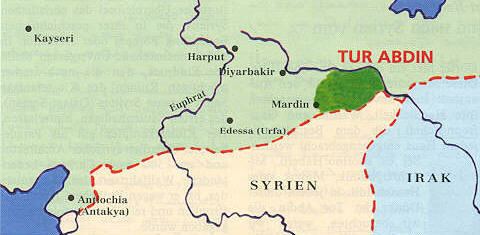
During World War I, 500,000 Assyrian Christians were killed in the Ottoman Empire's Assyrian Genocide (called in Syriac Sayfo, simply 'the sword'). In the last few decades, caught between Turkish assimilation policies against Kurds, and Kurdish resistance, many Assyrians have fled the region or been killed. Today there are only 5,000, a quarter of the Christian population thirty years ago. Most have fled to Syria (where the city of Qamishli was built by them), Europe (particularly Sweden, Germany, the United Kingdom and the Netherlands), Australia and the United States. In the past few years, a few families have returned to Tur Abdin.
Recent conflictsEdit
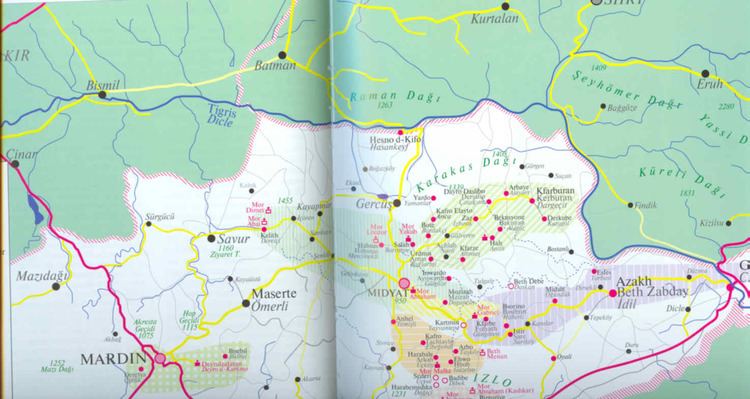
On 10 February 2006 and the following day, large demonstrations took place in the city of Midyat in Tur Abdin. Muslims angry about the Jyllands-Posten Muhammad cartoons gathered in Estel, the new part of the city, and started to march towards the old part of Midyat (6 kilometers away), where the Christians live. The mob was stopped by the police before reaching old Midyat.
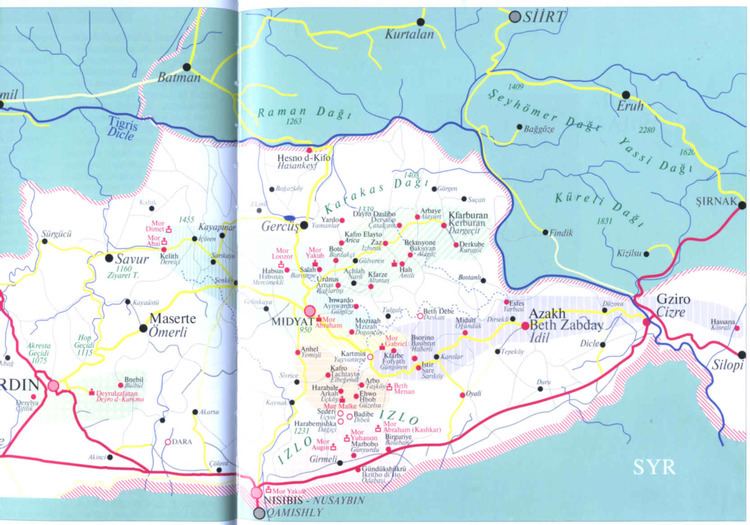
In 2008 a series of legal challenges were made against the monastery of Mor Gabriel. Some local Kurdish villages sought to claim land on which the monastery had paid taxes since the 1930s as belonging to the villages, and made other accusations against the monastery. This led to considerable diplomatic and Human Rights action throughout Europe and within Turkey.
MonasteriesEdit
The most important Syriac Orthodox centre in Tur Abdin is the monastery of Dayro d-Mor Hananyo, 6 km south east of Mardin, in the west of the region. Built from yellow rock, the monastery is affectionately known as Dayro d Kurkmo in Syriac, Dayr al-Zafaran in Arabic, or Deyrülzafarân in Turkish: the Safron Monastery. Founded in AD 493, the monastery was the residence of the Syriac Orthodox Patriarch from 1160 to 1932. Although the patriarch now lives in Damascus the monastery still contains the patriarchal throne and tombs of seven patriarchs and metropolitans. Today the monastery is led by a bishop and a monk and some lay assistants, and is a school for orphans. The bishop of Mor Hananyo is also the patriarchal vicar of Mardin. His goal is to rebuild the monastery and to preserve the history of the Syriac Orthodox church. The Dayro d-Mor Hananyo is part of the UNESCO world cultural heritage and was visited by numerous celebrities e.g. like Prince Charles.
In the centre of the Tur Abdin region, a few miles south of Midyat, is Dayro d-Mor Gabriel. Built in AD 397, Mor Gabriel monastery, is the oldest functioning Syriac Orthodox monastery on earth. It is the residence of the Metropolitan Bishop of Tur Abdin, seven nuns, four monks and a host of guests, assistants and students. The monastery is charged with keeping the flame of Syriac Orthodox faith alive in Tur Abdin, for which it is as much a fortress as a church.
The Saffron and Mor Gabriel monasteries are the most important of the region, existing along with six or seven other active monasteries:
